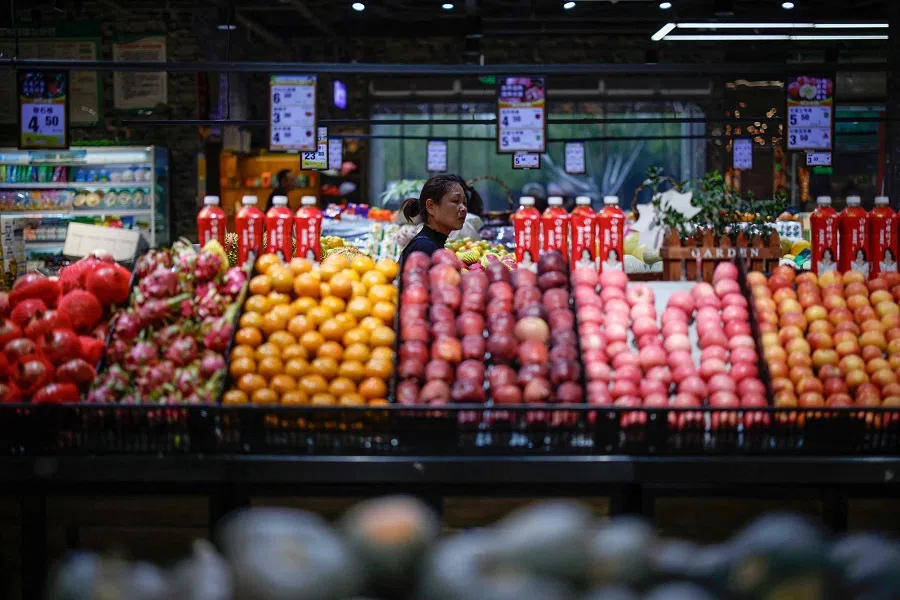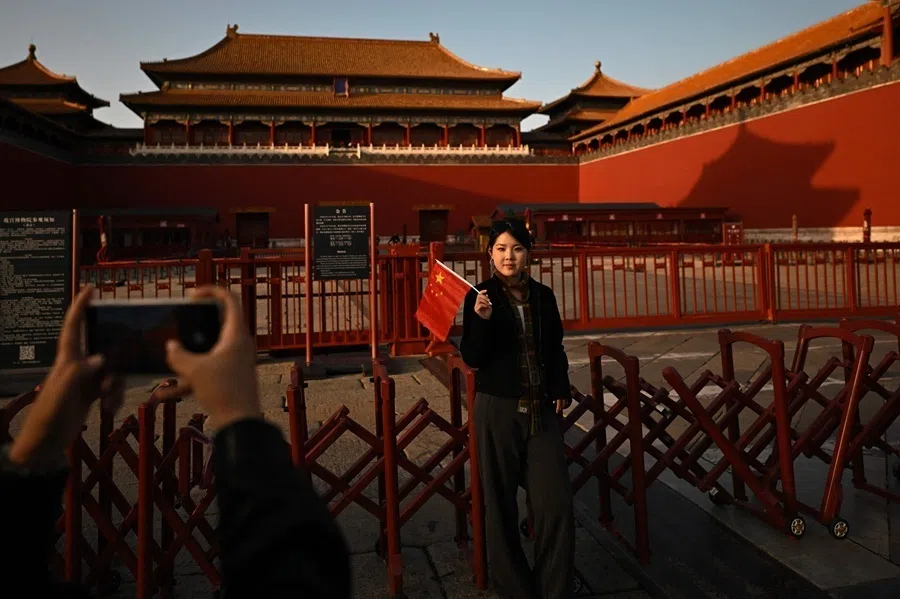How China can meet its needs for food security and self-sufficiency
Analysing China’s recent directive on “big agriculture and big food”, researcher Genevieve Donnellon-May says that by embracing innovative practices, recycling food waste and engaging the private sector, China can improve its agricultural resilience.

Food security remains high on China’s policy menu.
On 12 September, the State Council, China’s cabinet, issued a directive proposing to establish a “big agriculture and big food” (树立大农业观、大食物观) concept to ensure the country’s grain security and agricultural production to feed its 1.4 billion people.
At present, China is both the world’s biggest agricultural producer and importer. The country is also a major food exporter.
Amid changing geopolitical dynamics, climate change, trade disruptions and domestic challenges, the ambitious new strategy places much greater emphasis on expanding production beyond traditional farmland through a more diversified and resilient food supply chain system in comparison to previous food policy documents.
Underscoring Beijing’s commitment to self-reliance in food production, key initiatives include promoting new food varieties and diversifying supply chains, supported by policy and financial backing.
Two ambitious targets are outlined. By 2027, China will have established a diversified food supply system with more food sourcing channels. Developing natural resources (like forests) and facility-based agriculture will create a food system comprising agriculture, forestry, animal husbandry and fishery, plants, animals and microorganisms. By 2035, China will have a more diversified food system to meet the population’s nutritional and consumer preferences.
... domestic agricultural production faces many challenges, including changing dietary preferences, arable land and water constraints, and soil pollution.
Persistent food security challenges
Food security and food self-sufficiency have long been priorities for China. For Chinese President Xi Jinping, improving food security and local agricultural production remains a consistent priority. Yet domestic agricultural production faces many challenges, including changing dietary preferences, arable land and water constraints, and soil pollution.

Climate shocks further exacerbate matters, raising fears of food production failure and increases in crop pests and diseases. In 2022, severe drought across the Yangtze River basin, home to China’s rice production, laid bare 2.2 million hectares of arable land and killed countless livestock.
The country’s self-sufficiency ratio has dropped in recent decades. In 2004, China moved from being a net food exporter to a net importer. The country’s food self-sufficiency rate decreased considerably from 93.6% in 2000 to 65.8% in 2020, while its reliance on food imports during this time has increased.
In response to these domestic challenges, geopolitical risks and climate change, Xi has consistently asserted that the country’s food supplies are paramount, declaring that the rice bowls of China’s 1.4 billion people “will always be firmly held in their own hands”.
Tackling food waste a significant factor
To strengthen the new strategy, reducing food waste should be included. With 6% of China’s total food production “lost” during processing, transport or storage, reducing food waste is key. The situation is severe. A 2020 survey found restaurants in Chinese cities wasted at least 34 million tons of food every year, which can feed up to 49 million people. Although China has seen consecutive bumper harvests, Chinese leaders have frequently pointed out the necessity of preventing food waste.
Some steps have been taken. In 2013 and 2020, the government launched nationwide campaigns against food waste.
In April 2021, the Standing Committee of the National People’s Congress enacted the “Anti-Food Waste Law”, which took immediate effect. The response to this law has so far been fairly positive. A June 2021 survey by the China Youth Daily found that there is increasing public awareness against food waste in China. According to the survey, 71% of respondents said they felt a greater sense of preventing food waste among the public, while over 65% of respondents said they would practice “Clean Your Plate”.
Food waste makes up around 50% of municipal solid waste produced in China, with the majority ending up in landfills or incinerators.

Other statistics are also promising. Early data from the Rare China Center for Behavior, which supports 20 small and medium-size restaurants through a pilot programme to reduce food waste, shows that participating restaurants have reduced food waste by almost 20% reduction in food waste in participating restaurants in comparison to baseline data collected at the beginning of the programme.
More can be done. Notably, food waste can be recycled in waste treatment centres, creating animal feed, soil enrichment or generating energy. Recent estimates suggest Chinese cities produce 25% of the world’s municipal solid waste. Food waste makes up around 50% of municipal solid waste produced in China, with the majority ending up in landfills or incinerators.
Some countries already use biomass gasification to convert biomass (such as food and agricultural waste) into synthesis gas for renewable energy. This energy source can be used for purposes including electricity generation, heating and transportation fuels.
Lessons can be learned from other countries. In Brazil, an agricultural powerhouse with around 215.3 million people, renewable energy makes up 46% of total energy supply. Biomass supplies an enormous 70% of the renewable energy supply. The country has 637 projects powered by biomass, of which 442 — use sugarcane bagasse, with a total capacity of 12,410 megawatts.
Policy and energy plan supply plans also play a role. By 2040, China plans to reduce coal’s share of energy from 57% to 35% while increasing the share of biomass.

Exploring biomass power generation
China has also demonstrated an interest in waste management systems. Since 2010, 100 cities have explored alternative waste management systems. Following this, in 2016, the country amended its Solid Waste Law as part of efforts to improve oversight of waste generators while promoting the recycling and reuse of wastes, including food.
Policy and energy plan supply plans also play a role. By 2040, China plans to reduce coal’s share of energy from 57% to 35% while increasing the share of biomass. To support this, from 2006 to 2021, noted a report on biomass generation in China, more than 60 national-level regulations and policies related to biomass power generation have been implemented by the Chinese authorities, including in national five-year plans.
Others point out concerns like insufficient market competition, labour costs and subsidies preventing this from being rolled out on a larger scale. Nonetheless, as noted in the same report above, the Chinese central authorities have made some attempts to address concerns.
Notably, in 2021, China’s National Development and Reform Commission, Ministry of Finance, and National Energy Administration jointly issued the 2021 Biomass Power Generation Project Construction Work Plan which outlined that 2.5 billion RMB (US$351.4 million) of financial subsidies from central and local government would be set aside for biomass power generation in that year.
In this light, recycling food waste and biomass generation could play roles in contributing to China’s food security as well as related energy and climate goals.
Questions arise about who will implement the State Council’s new directive amid demographic challenges, declining total fertility rates and potential labour shortages.
Innovative efforts needed to ensure food supply
Challenges lie ahead. Aside from limited natural resources, financial considerations and climate change concerns, other issues may need to be addressed by Beijing.
Questions arise about who will implement the State Council’s new directive amid demographic challenges, declining total fertility rates and potential labour shortages. In 2022, about 176.6 million people — 24.1% of the nation’s workforce — were engaged in agriculture, fishing and related jobs. The overwhelming majority — 90% — of the country’s agricultural workforce are smallholder farmers, cultivating over 70% of China’s arable land.

However, the average age of the agricultural labour force is 53 while over 25% are aged 60 or older. As younger generations migrate to cities for better jobs, concerns about the future rural workforce continue mounting.
To this end, the private sector, alongside state-owned enterprises and research institutions, could invest in innovative agricultural technologies and food research and development (R&D) programmes. After all, China already has the world’s largest and most decentralised public agricultural R&D systems. Doing so can help attract talented younger scientists and workers to the food industry to carry out the new food strategy.
... Chinese scientists recently developed salt-tolerant rice strains, also known as “seawater rice”, which could help meet the country’s rice demand.
Some companies are already taking action. Notably, Pinduoduo, the country’s largest agricultural e-commerce marketplace, has become the leading direct-to-consumer agricultural platform in the country. It is used by more than 16 million farmers to sell produce to 880 million consumers who shop on the platform.

Elsewhere, Chinese scientists recently developed salt-tolerant rice strains, also known as “seawater rice”, which could help meet the country’s rice demand. Test fields recorded in Tianjin recorded a yield of 4.6 metric tons per acre in 2021, higher than the national average for production of standard rice varieties.
Food safety is a critical concern in China, especially following recent scandals involving contaminated products, such as the cooking oil contamination that led many consumers to turn to foreign brands. In this case, tanker trucks were found delivering cooking oil immediately after transporting chemicals. This heightened fears about the safety and quality of locally produced food.
As Beijing rolls out new food and agricultural policies, addressing these consumer concerns and behaviour will be essential for their success.
The new food strategy represents a pivotal step toward enhancing food supply chain resilience and innovation amid internal and external challenges. By embracing innovative practices, recycling food waste and engaging the private sector, China can improve its agricultural resilience, emerging as a regional and global leader in sustainable food production.




![[Big read] Prayers and packed bags: How China’s youth are navigating a jobless future](https://cassette.sphdigital.com.sg/image/thinkchina/16c6d4d5346edf02a0455054f2f7c9bf5e238af6a1cc83d5c052e875fe301fc7)
